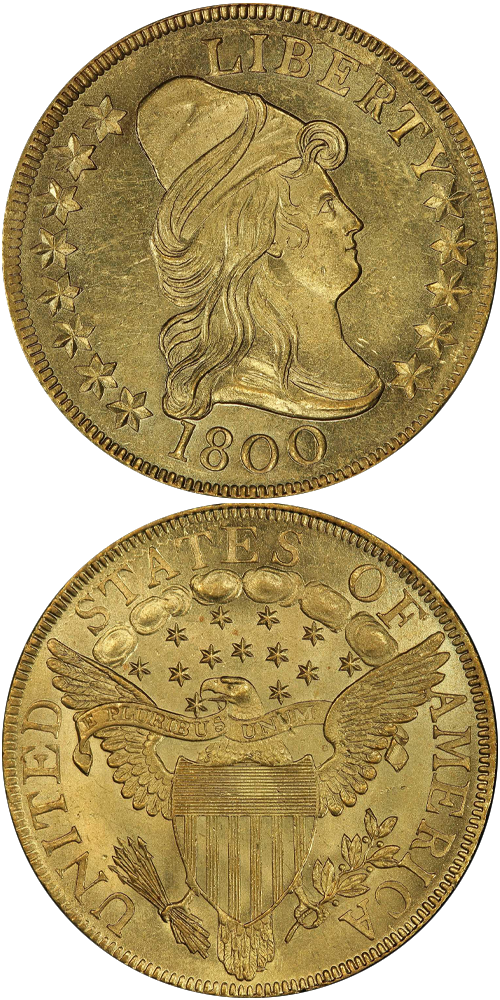1800 Capped Bust Right Eagle
The die state sequence of this variety reveals that this specimen, despite its 1800 date, was actually produced later than the entire mintage of 1801 BD-1. Such hijinks make something as simple as determining a mintage figure for a given year complicated, but they also reward the careful study of the early products of the United States Mint. The canonical mintage figure for 1800 eagles is 5,999 coins, based upon delivery warrants from that calendar year. John Dannreuther's revised estimate suggests that as many as 12,500 eagles dated 1800 could have been struck, most of them in 1801. All of these were struck from a single combination of dies, employing a reverse that was also used to strike 1799 BD-10.
John Adams was president in 1800, and as chief executive, he heard from everyone who wanted something from the federal government. When John Marshall, then secretary of state, forwarded the petition from an individual who sought a contract to produce coins for the United States (under the assumption that the United States Mint would soon close), Adams put him off. Writing from his home in Quincy, Massachusetts, Adams told Marshall that the coins struck at the Mint in Philadelphia were as good as any he’d encountered on his world travels. Adams recalled his days in Paris, writing "the motto of the hotel de Valentinois, in which I lived at Passy, was si sta bene, non se move, [or] 'if you stand well, stand still.' The epitaph stava ben ma por stare meglio sto qui, [translated as] 'I was well, but by taking too much physick to be better, lo here I lie' is a good admonition. I will not be answerable for the correctness of my Italian." Adams, having seen eagles just like this one, preferred to leave well enough alone.
The example to the left was sold by Stack's Bowers Galleries in the D. Brent Pogue Part II Auction, where it realized $99,875.






